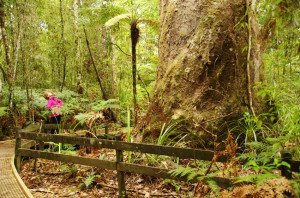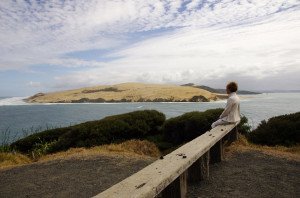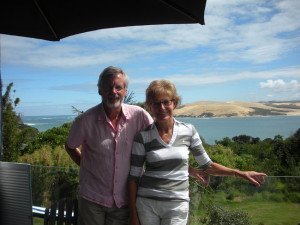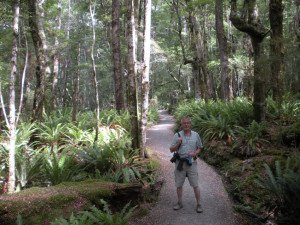For most of our time in New Zealand we’ve tended to spend every third or fourth night on commercial campsites and in between we’ve ‘freedom camped’ on sites provided either by the Department of Conservation (DOC) or by the local town or regional authorities. These vary in providing absolutely no facilities, other than the space in which to park your van or pitch your tent, to well organised campgrounds with toilets and some even provide showers, kitchens, power etc. Even the commercial sites are inexpensive by European standards, with most charging around $20/adult whilst the DOC and other sites charge around $10, or in some cases are free. It’s a good system and means that there’s no real need for campers to stop where they’re unwanted or to pull over on the roadside for the night. One word of advice; if you are going to use the DOC sites be sure to get there in good time as even out of peak season the better ones tend to fill up by gin time.
Sunday night we were on a well-provided DOC site on the edge of the Trounson Kauri forest sitting just to the side of Highway 12 which runs down the west coast of Northland. Much of Northland, Auckland and the Coromandel Peninsula were once covered in mixed forests dominated by the mighty kauri, the world’s second largest tree, but by the early 20th century nearly all had been felled, either for their magnificent wood or to make way for agriculture.
The only two remaining extensive pockets are the Waipoura and Trounson forests which are well worth a visit just to marvel at these enormous trees, the largest of which can live for 2,000 years and reach 50m in height and 20m in girth. It’s an interesting fact (not a lot of people know this) that it’s now illegal to fell a kauri except in particular circumstances which include culling a diseased or dying tree, or when constructing a ceremonial war canoe – imagine explaining that one to the Cotswold District Tree Protection Officer!
Hokianga Harbour is one of those places that needs to be seen in the sunshine. Fortunately the clouds parted and the sun broke through just as we arrived, so the view from the café as we tucked into our daily latte and muffin was to die for (we’re easily pleased these days).



